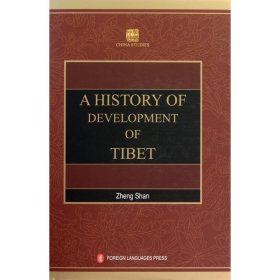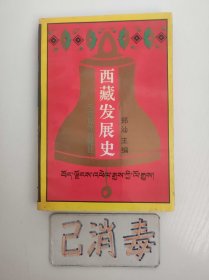
西藏发展史
全新正版 假一赔十 可开发票
¥ 61.16 6.2折 ¥ 98 全新
库存2件
北京东城
认证卖家担保交易快速发货售后保障
作者郑汕;西藏发展史英译组
出版社外文出版社
ISBN9787119065380
出版时间2010-08
装帧精装
开本16开
定价98元
货号11629612
上书时间2024-11-14
- 最新上架
商品详情
- 品相描述:全新
- 商品描述
-
目录
PREFACE Deng Fuquan and Yang Zaizhong
CHAPTER ONE ANCIENT SOCIETY OF TIBET
Section One Origin of the Tibetan People and the Development of:Tibet by Ancient Tibetans
1. The Rising of the Tibetan Land-Mass and the Formation of Its Natural Environment
2. Origin of the Tibetan Ethnic Group and the Distribution of Its PopUlation
3. The Development of Tibet by Ancestors of Various Ethnic Groups
Section Two Tibet Before the Establishment of, the Tubo Regime
1. The Blending of the Qiang and Tibetan Tribes at the Turn of the Qin to Han Dynasties
2. Tibetan Tribes in the Period of the Wei, the Jin and the Southern and Northern Dynasties
3. The Rise of the Pugyal Tribe in the Yarlung Valley
4. The Rise and Fall of the Bon Religion, the Primitive Religion of Tibet
CHAPTER TWO THE TUBO DYNASTY OF THE TIBETAN SLAVE-OWNING SYSTEM
CHAPTER THREE THE MERGING OF TIBET INTO CHINA IN THE YUAN DYNASTY AND THE ESTABLISHMENT OF FEUDAL SERF SYSTEM
CHAPTER FOUR THE TIBETAN AREAS IN THE MING AND EARLY QING DYNASTIES
CHAPTER FIVE TIBETAN PEOPLE STAND AGAINST WESTERN POWERS INVASION
CHAPTER SIX TIBET UNDER SEMI-COLONIAL STATUS IN THE PERIOD OF THE REPUBLIC OF CHINA
CHAPTER SEVEN PEACEFUL LIBERATION AND BIRTH OF NEW TIBET
POSTSCRIPT
APPENDICES
内容摘要
《西藏发展史(英文版)》内容简介:A History of Development of Tibet is book of great academic value as it traces the course of development of the Tibet Autonomous Region and gives an insight into basic conditions in Tibet today.
With seven chapters this book introduces the formation of the natural environment of Tibet the origin of the Tibet ethnic group the multi-ethnic development of Tibet the close relations between Tibet and the Central Plains in Chinese history the powerful influence of the culture of the Central Plains on Tiber's politics economy culture and religion the formation of the various schools of Tibetan Buddhism and the unification of the government and religion in Tibet under the Ming and Qing dynasties and the Republic of China the Tibetan people's heroic struggle against imperialism and feudalism peaceful liberation and democratic reform the realization of ethnic regional autonomy and the building of socialism in Tibet With a wealth of data objective exposition and many new ideas this book will help readers have a good understanding of one of Xhina's most important autonomous regions.
精彩内容
The
1911
Revolution
ended
the
feudal
system
in
China.
The
government
of
the
Republic
of
China
inherited
the
Qing's
administrative
structure
in
the
Tibetan
areas.
It
set
up
an
administrative
organ
in
charge
of
Mongolian
and
Tibetan
affairs,
selected
Tibetan
delegates
to
attend
the
national
assembly
and
appointed
its
commissioners
in
charge
of
Tibetan
affairs.
Trying
to
obstruct
this,
the
British
government
engineered
the
"Simla
Conference"
of
1913,
seeking
to
interfere
in
China's
internal
affairs
and
force
the
so-called
Simla
Treaty
on
China,
which
severely
violated
China's
sovereignty
and
was
an
attempt
to
split
China's
territory.
This
British
conspiracy
was
opposed
and
condemned
by
all
the
Chinese
people
and
their
government.
At
the
time
of
the
May
Fourth
MOvement
of
1919,
the
government
of
the
Republic
of
China
(ROC)
disclosed
to
the
public
the
Sino-British
negotiation
process
relating
the
so-called
Tibet
problem.
It
aroused
antiimperialist
rage
among
the
Chinese
people
both
in
China
and
abroad.
Tibetan
civil
and
religious
leaders
相关推荐
— 没有更多了 —




















以下为对购买帮助不大的评价